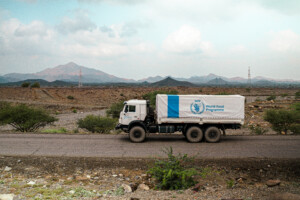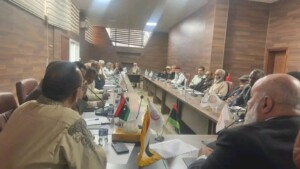Sudan OCHA bulletin 48: Sudan joins Scaling Up Nutrition movement
The UN Office for the Coordination of Humanitarian Affairs (OCHA) in Sudan reported in its latest weekly bulletin of 23-29 November that the Sudanese government, in its efforts to reduce malnutrition in the country, has become a member of the Scaling Up Nutrition (SUN) movement.
With the membership, Sudan commits itself to focus on nutrition as a national priority.
The UN Office for the Coordination of Humanitarian Affairs (OCHA) in Sudan reported in its latest weekly bulletin of 23-29 November that the Sudanese government, in its efforts to reduce malnutrition in the country, has become a member of the Scaling Up Nutrition (SUN) movement.
With the membership, Sudan commits itself to focus on nutrition as a national priority.
During the last three years, there has been significant progress in the government’s recognition of malnutrition as a key public health challenge with a massive scale up in treatment. The government also supports the UN Children’s Agency (Unicef) and World Food Programme (WFP) Nutrition Investment Case plan, which will be launched in the coming weeks.
More than two million Sudanese children under 5 years are acutely malnourished every year, of whom one in four are at high risk of death.
Returnees in need of assistance
13,200 people who fled their homes in Labado, East Darfur, early April 2013 when fighting broke out between government forces and Sudan Liberation Movement-MM) in the area, returned to their village in September.
They are in urgent need of water and health services. Aid organisations and local authorities are currently working on a response plan to assist the returnees.
In Central Darfur, 24,000 people recently returned to Um Dukhun locality from Chad. The majority of them had been living outside of camps in Chad and were not registered as refugees there. They returned to the Muradef area at the border with Chad because they considered their home areas in Um Dukhun still unsafe.
The Darfuris decided to return because of the improved security situation in Um Dukhun locality, and the ultimatum the Chadian government set for the Sudanese refugees, to either integrate into the camps or to return to Sudan.
The government Humanitarian Aid Commission (HAC), together with Triangle Génération Humanitaire organisation, and traditional leaders conducted an assessment on 17 November. The returnees are in need of emergency shelter and household supplies as well as water and sanitation services.
Viral haemorrhagic fever cases reach 469, including 120 fatalities
According to the Sudanese Ministry of Health, between 29 August-27 November, 469 suspected cases of viral haemorrhagic fever (VHF), including 120 deaths, were reported in the five Darfur states. The outbreak has now spread to 27 localities.
The highest number of reported cases is in West Darfur (296) followed by North Darfur (68) Central Darfur (68), South Darfur (23), and East Darfur (14). The state with the highest fatalities is West Darfur (90) followed by North Darfur (15), Central Darfur (12), East Darfur (2) and South Darfur (1).
The World Health Organization (WHO) and Doctors without Borders/Médecins Sans Frontières (MSF) continue to support the Ministry of Health with with integrated vector control activities in the affected localities.
More than 198,314 South Sudanese refugees in Sudan
As of 25 November, the total number of South Sudanese refugees who arrived in Sudan since violence erupted in their home country in mid-December 2013, stands at 198,314.
On 19 November, the HAC Commissioner for White Nile state met with humanitarian organisations and highlighted the need to assess the needs of South Sudanese who are residing with host communities. The assessments will be conducted this month.
Aid organizations continue to assist South Sudanese refugees in White Nile state. A mid-upper arm circumference (MUAC) screening conducted between 12-25 November at refugee sites in the state show that of the 7,534 children under 5 years screened, 29 have severe acute malnutrition (SAM) and 630 have moderate acute malnutrition (MAM). In response, a targeted supplementary feeding program (TSFP) was launched for the treatment of MAM cases, and capacity-building training on malnutrition was held for 16 nutritionists and nutrition assistants working locally.
Read the full bulletin here











 and then
and then